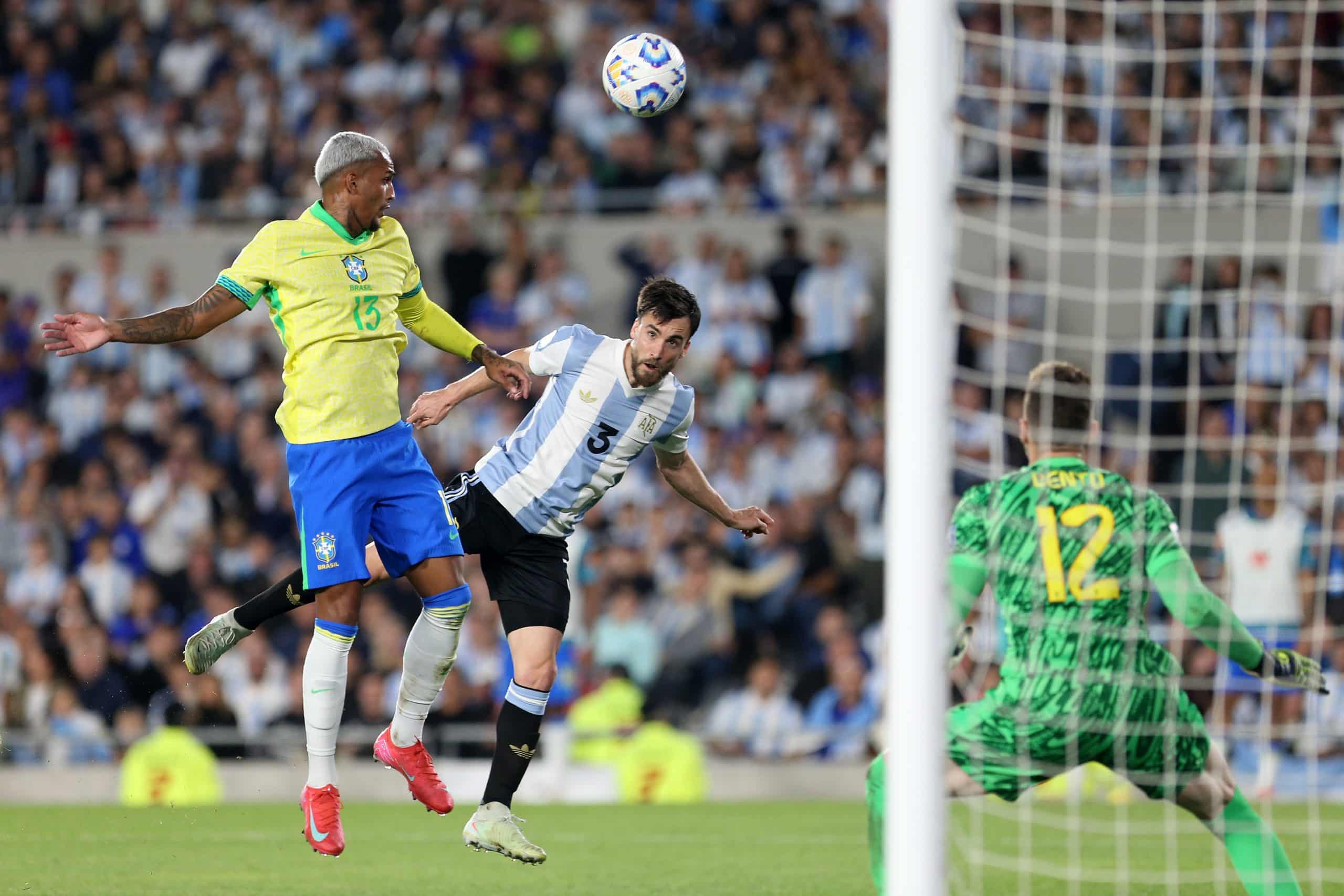In a team where every line stands out, today we want to focus on the importance of full-backs in the current Argentina National Team. To do so, we’ll analyze the most common offensive behaviors of Nicolás Tagliafico and Nahuel Molina — key players in Lionel Scaloni’s system.

-
Providing Offensive Width to the Team
Argentina, under the guidance of Lionel Scaloni, has primarily used a 4-3-1-2 formation. However, in their most recent match against Brazil — which we’ll focus on — Scaloni opted for a 4-1-4-1 setup.
In this tactical structure, the coach chose not to use traditional wingers. Instead, it was the full-backs, Tagliafico and Molina, who were responsible for providing width and depth in attack. In other words, both players adopted roles more typical of wingers during the offensive phase.
This approach caused the opposing full-backs — in this case, Wesley and Arana — to lack clear marking references. Argentina’s attacking midfielders occupied the central areas, creating confusion within Brazil’s defensive line, while the Argentine full-backs exploited the wide spaces, breaking the opponent’s structure.

-
Creating Numerical Superiority
The role of Tagliafico and Molina goes beyond simply providing width. During the offensive phase, they are also crucial in creating numerical superiority in wide areas.
When the ball is with a winger or any player near the flank, the full-backs offer solutions through different types of runs — both supporting and penetrating — either on the outside (wing) or inside (half-space). These movements always serve a clear tactical purpose: to offer a passing option or, at times, to act as a decoy to free up space — as seen in Argentina’s first goal against Brazil.
To achieve this, they apply several offensive individual fundamentals, such as:
-
Joining the finishing zone to attract defenders and create space.
-
Providing offensive cover to maintain balance when a teammate pushes forward into advanced positions.
This level of dynamism and coordination ensures that Argentina’s attacking structure remains balanced, even when committing many players in the final third.
-
Play to “arrive” and not to “be”
Another common behavior of both Tagliafico and Molina is the application of the offensive principle “play to arrive, not to be.” This occurs when the ball is in a specific area of the field, and the full-backs exploit the opponent’s weak side through the individual skill of “joining the finishing zone during changes of orientation.”
This pattern was clearly demonstrated in the fourth goal of the match against Brazil, where Tagliafico attacked from the weak side and played a key role in finishing the move. However, it’s important to note that this wasn’t an isolated action, but a tactical behavior that has been consistently repeated throughout Scaloni’s tenure.
The full-backs push forward on the outside to provide width, and from there, they synchronize with the attacking runs of the midfielders in the interior lanes. This coordination has proven to be a very effective offensive tool and reflects how the role of the full-back in this Argentina National Team goes beyond the traditional function, making them crucial players in both the construction and finalization of attacks.

Conclusion
Lionel Scaloni’s Argentina National Team has successfully evolved its playing style by incorporating tactical variations that enhance collective performance. In this context, the role of the full-backs — traditionally associated with defensive duties — has taken on a new dimension.
Both Nicolás Tagliafico and Nahuel Molina have proven to be much more than mere occupants of the flanks. Their ability to provide width, create numerical superiority, and attack from the weak side with the “arrive and not be” principle makes them strategic assets within the team’s offensive structure.
Far from being an occasional resource, their involvement in various play patterns reflects a systematic and planned approach that has been key to the team’s recent success. In this way, Argentina’s full-backs not only complement the play but also enrich it, showcasing the evolution of modern football, where every position can be decisive.







